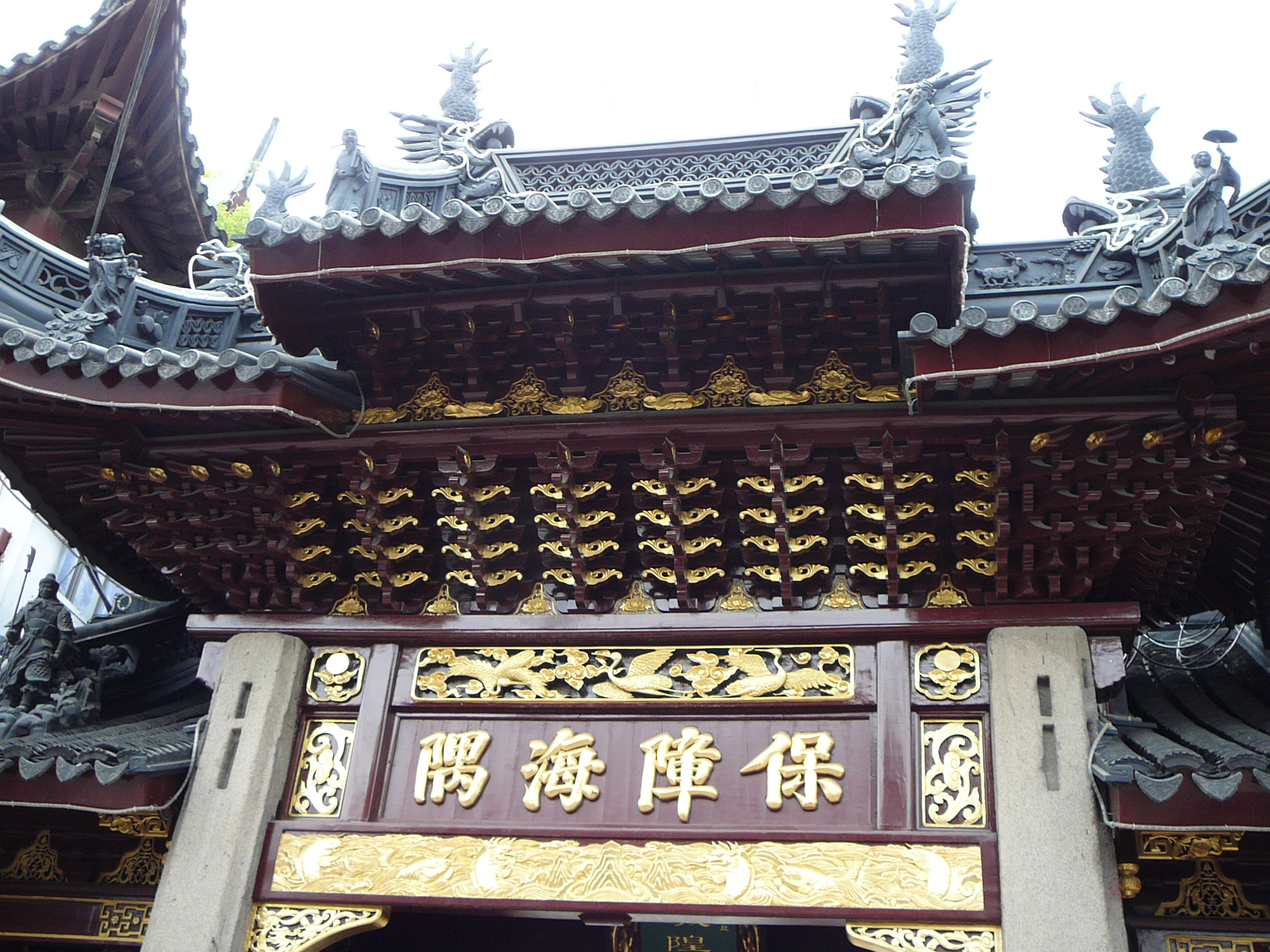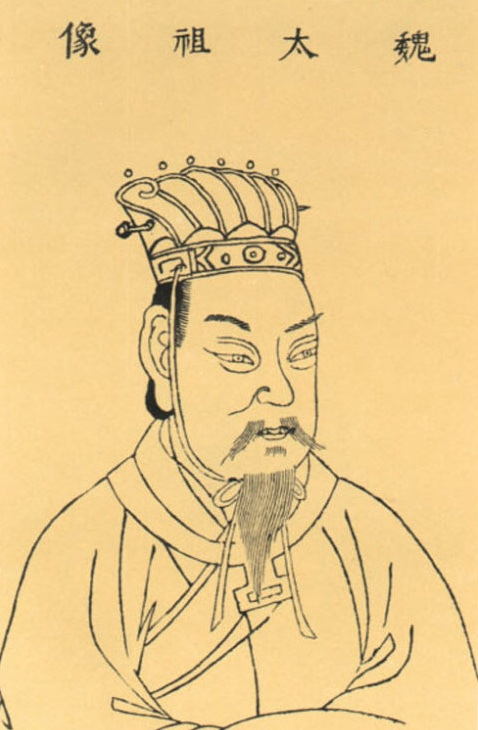|
Wuxian Temple
The Temple of the Five Immortals, formerly wrongfully translated as the Temple of the Five Genii, is a former Taoist temple in Guangzhou, Guangdong, in China. It lies beside the junction of West Huifu Road and Liurong Rd. Legend The five immortals honored by the temple are first attested in a passage of the 983 '' Taiping Imperial Readings'' () explaining Guangzhou's nickname "City of the Rams". One of the etiological myths given is that At one time, Sun Hao made Teng Xiu a governor but, before reaching his prefecture, there were five immortals riding five colored sheep and bearing the five grains who came upon him and, after he received them, they left. Now the prefectural hall's beams bear the five immortals riding five colored sheep for good luck. The other story, credited to the ''Records of Guangzhou'' () of Pei Yuan (), includes the rams and grain but omits the immortals and places the story in Chu during the ministry of Gao Gu. Later accounts of the immortals' local ... [...More Info...] [...Related Items...] OR: [Wikipedia] [Google] [Baidu] |
Paifang
A ''paifang'', also known as a ''pailou'', is a traditional style of Chinese architectural arch or gateway structure. Evolved from the Indian subcontinent's ''torana'' through the introduction of Buddhism to China, it has developed many styles and has been introduced to other East Asian countries, such as Korea, Japan, and Vietnam. Etymology The word ''paifang'' () was originally a collective term for the top two levels of administrative division and subdivisions of ancient Chinese cities. The largest division within a city in ancient China was a ''fang'' (), equivalent to a current day ward. Each ''fang'' was enclosed by walls or fences, and the gates of these enclosures were shut and guarded every night. Each ''fang'' was further divided into several ''pai'' (), which is equivalent to a current day (unincorporated) community. Each ''pai'', in turn, contained an area including several hutongs (alleyways). This system of urban administrative division and subdivision reached an ... [...More Info...] [...Related Items...] OR: [Wikipedia] [Google] [Baidu] |
Chinese Chancellor
The grand chancellor (''zaixiang, tsai-hsiang''), also translated as counselor-in-chief, chancellor, chief councillor, chief minister, imperial chancellor, lieutenant chancellor and prime minister, was the highest-ranking executive official in the imperial Chinese government. The term was known by many different names throughout Chinese history, and the exact extent of the powers associated with the position fluctuated greatly, even during a particular dynasty. During the Six Dynasties period, the term denoted a number of power-holders serving as chief administrators, including ''zhongshun jian'' (Inspector General of the Secretariat), ''zhongshu ling'' (President of the Secretariat), ''shizhong'' (Palace Attendant), ''shangshu ling'' and ''puye'' (president and vice-president of the Department of State Affairs). History In the Spring and Autumn period, Guan Zhong was the first chancellor in China, who became chancellor under the state of Qi in 685 BC. In Qin, during the Warring ... [...More Info...] [...Related Items...] OR: [Wikipedia] [Google] [Baidu] |
Chinese Guardian Lions
Chinese guardian lions, or imperial guardian lions, are a traditional Chinese architectural ornament, but the origins lie deep in much older Indian Buddhist traditions. Typically made of stone, they are also known as stone lions or shishi (). They are known in colloquial English as lion dogs or foo dogs / fu dogs. The concept, which originated and became popular in Chinese Buddhism, features a pair of highly stylized lions—often one male with a ball which represents the material elements and one female with a cub—which represents the element of spirit, were thought to protect the building from harmful spiritual influences and harmful people that might be a threat. Used in imperial Chinese palaces and tombs, the lions subsequently spread to other parts of Asia including Japan (see komainu), Korea, Philippines, Tibet, Thailand, Myanmar, Vietnam, Sri Lanka, Nepal, Cambodia, Laos, and Malaysia. Description Statues of guardian lions have traditionally stood in front of Ch ... [...More Info...] [...Related Items...] OR: [Wikipedia] [Google] [Baidu] |
Black Plague
The Black Death (also known as the Pestilence, the Great Mortality or the Plague) was a bubonic plague pandemic occurring in Western Eurasia and North Africa from 1346 to 1353. It is the most fatal pandemic recorded in human history, causing the deaths of people, peaking in Europe from 1347 to 1351. Bubonic plague is caused by the bacterium ''Yersinia pestis'' spread by fleas, but it can also take a secondary form where it is spread by person-to-person contact via aerosols causing septicaemic or pneumonic plagues. The Black Death was the beginning of the second plague pandemic. The plague created religious, social and economic upheavals, with profound effects on the course of European history. The origin of the Black Death is disputed. The pandemic originated either in Central Asia or East Asia before spreading to Crimea with the Golden Horde army of Jani Beg as he was besieging the Genoese trading port of Kaffa in Crimea (1347). From Crimea, it was most likely carried ... [...More Info...] [...Related Items...] OR: [Wikipedia] [Google] [Baidu] |
Hongwu Era
The Hongwu Emperor (21 October 1328 – 24 June 1398), personal name Zhu Yuanzhang (), courtesy name Guorui (), was the founding emperor of the Ming dynasty of China, reigning from 1368 to 1398. As famine, plagues and peasant revolts increased across China proper in the 14th century, Zhu Yuanzhang rose to command the Red Turban forces that conquered China proper, ending the Mongol-led Yuan dynasty and forcing the remnant Yuan court (known as Northern Yuan in historiography) to retreat to the Mongolian Plateau. Zhu claimed the Mandate of Heaven and established the Ming dynasty at the beginning of 1368 and occupied the Yuan capital, Khanbaliq (present-day Beijing), with his army that same year. Trusting only his family, he made his many sons feudal princes along the northern marches and the Yangtze valley.Chan Hok-lam.Legitimating Usurpation: Historical Revisions under the Ming Yongle Emperor (r. 14021424)". ''The Legitimation of New Orders: Case Studies in World History'' ... [...More Info...] [...Related Items...] OR: [Wikipedia] [Google] [Baidu] |
Chinese Calendar
The traditional Chinese calendar (also known as the Agricultural Calendar ��曆; 农历; ''Nónglì''; 'farming calendar' Former Calendar ��曆; 旧历; ''Jiùlì'' Traditional Calendar ��曆; 老历; ''Lǎolì'', is a lunisolar calendar which identifies years, months, and days according to astronomical phenomena. In China, it is defined by the Chinese national standard GB/T 33661–2017, "Calculation and Promulgation of the Chinese Calendar", issued by the Standardization Administration of China on May 12, 2017. Although modern-day China uses the Gregorian calendar, the traditional Chinese calendar governs holidays, such as the Chinese New Year and Lantern Festival, in both China and overseas Chinese communities. It also provides the traditional Chinese nomenclature of dates within a year which people use to select auspicious days for weddings, funerals, moving or starting a business. The evening state-run news program ''Xinwen Lianbo'' in the P.R.C. continues to anno ... [...More Info...] [...Related Items...] OR: [Wikipedia] [Google] [Baidu] |
Ming Dynasty
The Ming dynasty (), officially the Great Ming, was an Dynasties in Chinese history, imperial dynasty of China, ruling from 1368 to 1644 following the collapse of the Mongol Empire, Mongol-led Yuan dynasty. The Ming dynasty was the last orthodox dynasty of China ruled by the Han Chinese, Han people, the majority ethnic group in China. Although the primary capital of Beijing fell in 1644 to a rebellion led by Li Zicheng (who established the short-lived Shun dynasty), numerous rump state, rump regimes ruled by remnants of the House of Zhu, Ming imperial family—collectively called the Southern Ming—survived until 1662. The Ming dynasty's founder, the Hongwu Emperor (r. 1368–1398), attempted to create a society of self-sufficient rural communities ordered in a rigid, immobile system that would guarantee and support a permanent class of soldiers for his dynasty: the empire's standing army exceeded one million troops and the naval history of China, navy's dockyards in Nanjin ... [...More Info...] [...Related Items...] OR: [Wikipedia] [Google] [Baidu] |
Song Dynasty
The Song dynasty (; ; 960–1279) was an imperial dynasty of China that began in 960 and lasted until 1279. The dynasty was founded by Emperor Taizu of Song following his usurpation of the throne of the Later Zhou. The Song conquered the rest of the Ten Kingdoms, ending the Five Dynasties and Ten Kingdoms period. The Song often came into conflict with the contemporaneous Liao, Western Xia and Jin dynasties in northern China. After retreating to southern China, the Song was eventually conquered by the Mongol-led Yuan dynasty. The dynasty is divided into two periods: Northern Song and Southern Song. During the Northern Song (; 960–1127), the capital was in the northern city of Bianjing (now Kaifeng) and the dynasty controlled most of what is now Eastern China. The Southern Song (; 1127–1279) refers to the period after the Song lost control of its northern half to the Jurchen-led Jin dynasty in the Jin–Song Wars. At that time, the Song court retreated south of the ... [...More Info...] [...Related Items...] OR: [Wikipedia] [Google] [Baidu] |
Five Chinese Elements
(; Japanese: (); Korean: (); Vietnamese: ''ngũ hành'' (五行)), usually translated as Five Phases or Five Agents, is a fivefold conceptual scheme that many traditional Chinese fields used to explain a wide array of phenomena, from cosmic cycles to the interaction between Zang-fu, internal organs, and from the succession of political regimes to the Chinese herbology, properties of medicinal drugs. The "Five Phases" are Fire (wuxing), Fire ( zh, c=, p=huǒ, labels=no), Water (wuxing), Water ( zh, c=, p=shuǐ, labels=no), Wood (wuxing), Wood ( zh, c=, p=mù, labels=no), Metal (wuxing), Metal or Gold ( zh, c=, p=jīn, labels=no), and Earth (wuxing), Earth or Soil ( zh, c=, p=tǔ, labels=no). This order of presentation is known as the "Names of the days of the week#East Asian tradition, Days of the Week" sequence. In the order of "mutual generation" ( zh, c=相生, p=xiāngshēng, labels=no), they are Wood, Fire, Earth, Metal, and Water. In the order of "mutual overcoming" ( z ... [...More Info...] [...Related Items...] OR: [Wikipedia] [Google] [Baidu] |




.jpg)



